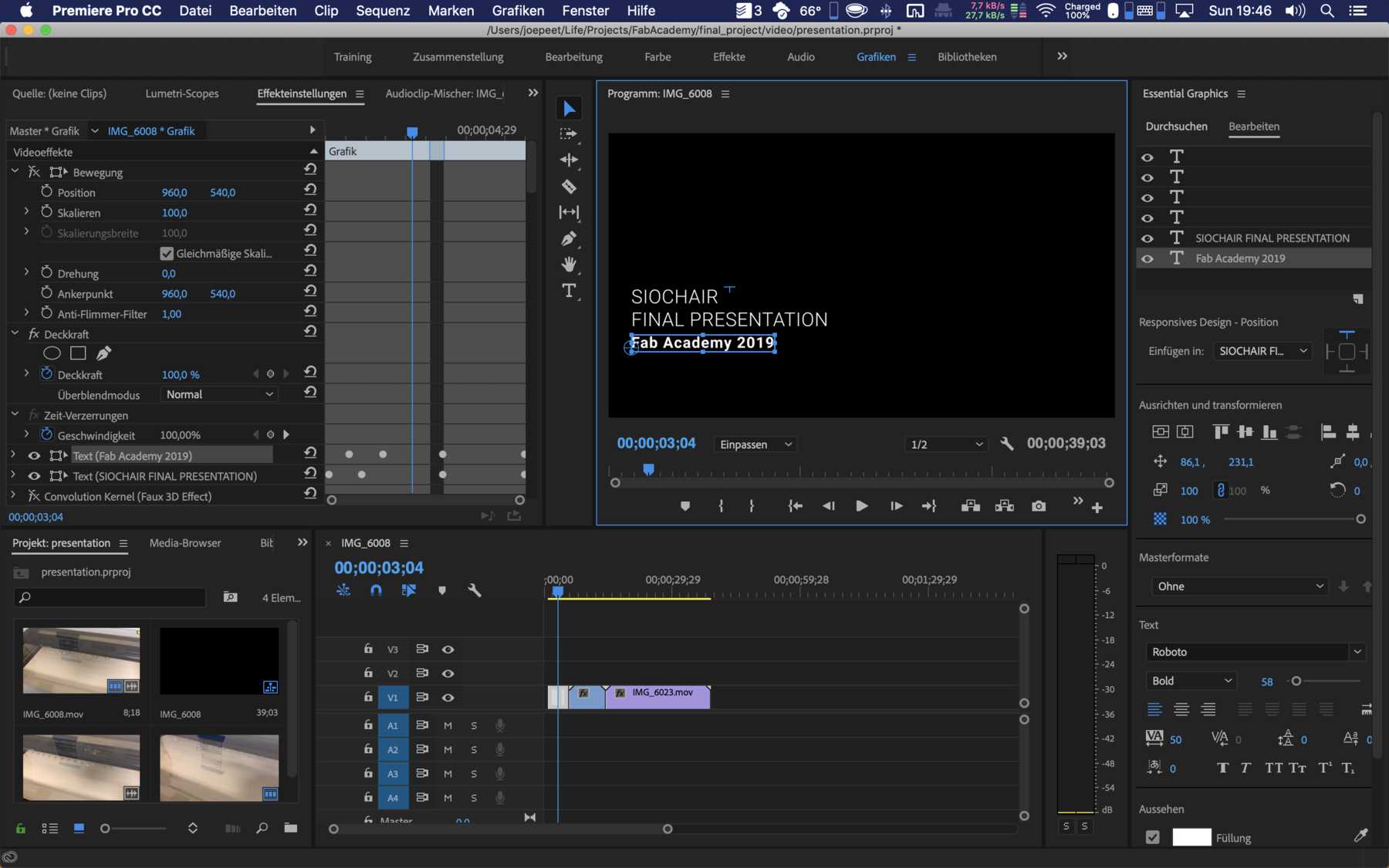Invention, Intellectual Property and Income
Week 19
The topic of individualization, especially in combination with the new digital manufacturing technologies, is still in its early stages. There are only a few end customer products. Disruptive innovations are rare. Value chains only change slowly because many product requirements have not yet been fulfilled. At the Fab Academy I also learned a lot about how important it is to find the right workflow at all stages. The use of 3D scans and the subsequent editing, ideally parameterized, is not as trivial as you might imagine. That’s why I see potential for further research and development here.
I would like to continue to use the chair as an example for my research. The sitting behaviour is completely different from that of an unadapted chair - at least after my first observation. I’m particularly interested in how you can continue working with the scan data later. How do others do it? It’s not like an orthosis, where you extrude a body on the scan. Rhino would be a possibility that I would like to pursue in the next few months. Especially the use with Grasshoper sounds promising. Further a mathematical adjustment, the evaluation of a heat map or something similar would be possible.
After a certain amount of preliminary work, I would like to start a research project on the subject. How can individualised products be produced locally in the city? What do future and possible value chains look like? There are several chair companies that are not yet active in this direction. Cooperation would be possible here, which I would welcome.
In addition to the relevant topic of individualization, the topic of pressure mapping and the associated data analysis is very exciting for me. I see a lot of potential here for the application of machine learning and would like to deepen this. For me, this would be an excellent example of an application that I would very much like to work on.
In a way, I see many research topics in the entire final project that I would like to investigate with partners. Later, after many iterations, a product would also be conceivable.
In the context of the Fab Academy I make all my developed contents available with the following license model:

This work is licensed under a Creative Commons Attribution-NonCommercial-ShareAlike 4.0 International License.
That means that you’re free with regard to
- Share — copy and redistribute the material in any medium or format
- Adapt — remix, transform, and build upon the material
But under the following terms:
- Attribution — You must give appropriate credit, provide a link to the license, and indicate if changes were made. You may do so in any reasonable manner, but not in any way that suggests the licensor endorses you or your use.
- NonCommercial — You may not use the material for commercial purposes.
-
ShareAlike — If you remix, transform, or build upon the material, you must distribute your contributions under the same license as the original.
- No additional restrictions — You may not apply legal terms or technological measures that legally restrict others from doing anything the license permits.
Prepare drafts
Another task was to create templates for the final presentation. First, a graphic template in the PNG format with a size of 1920x1080 pixels. This should be placed in the root directory with the name presentation.png. Furthermore a video should be created, which should also be stored in the root directory as presentation.mp4. This should be 1080p HTML5, less than one minute long and not larger than 10MB.
The graphics I have created with Adobe Photoshop and the video with Adobe Premiere. Here are two screenshots of the process:
And finally the results of the presentation:
And the video:


